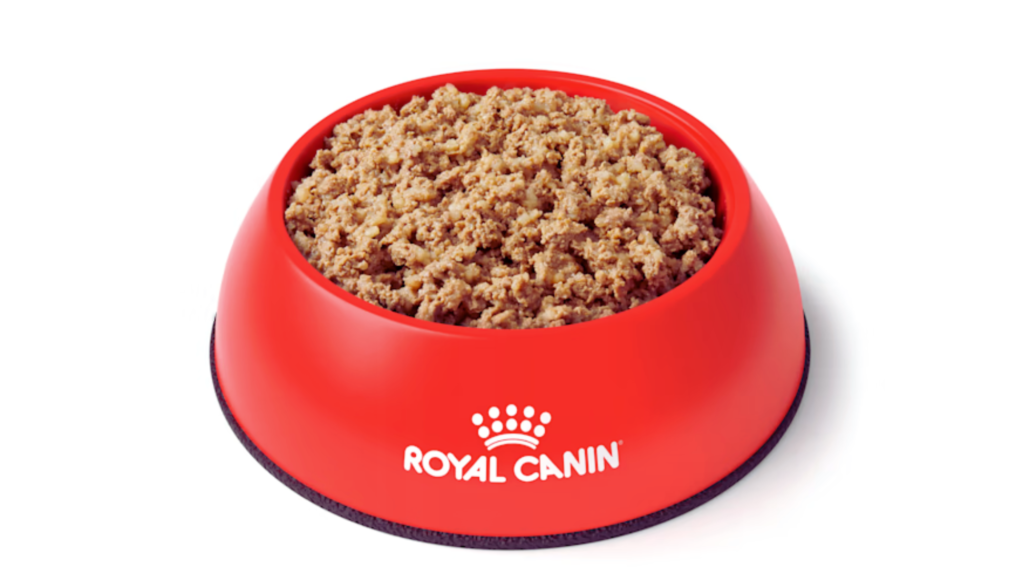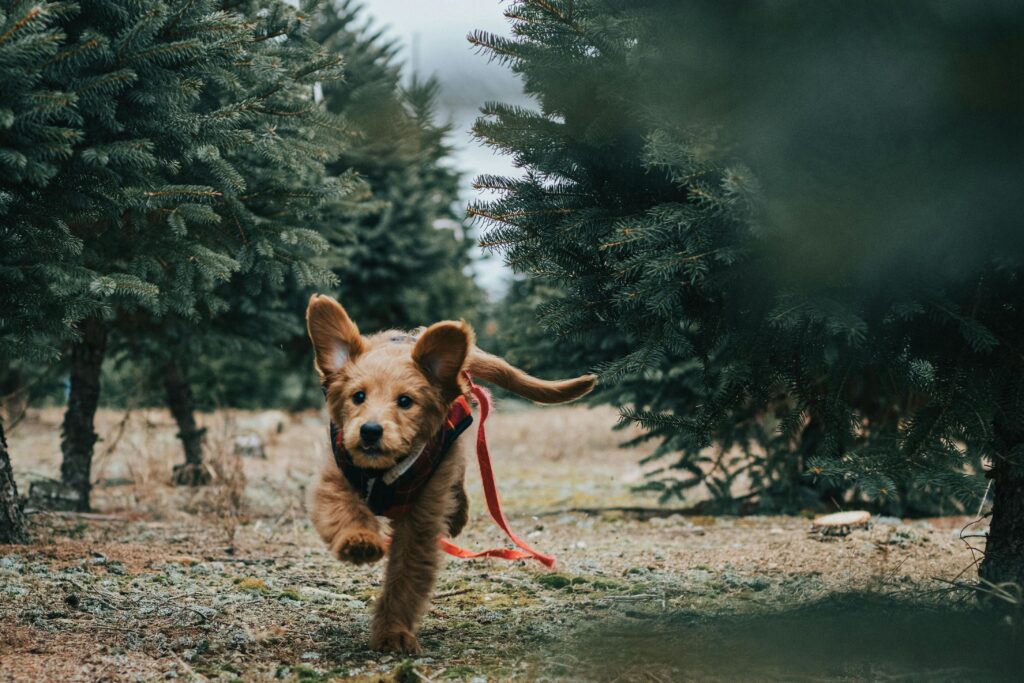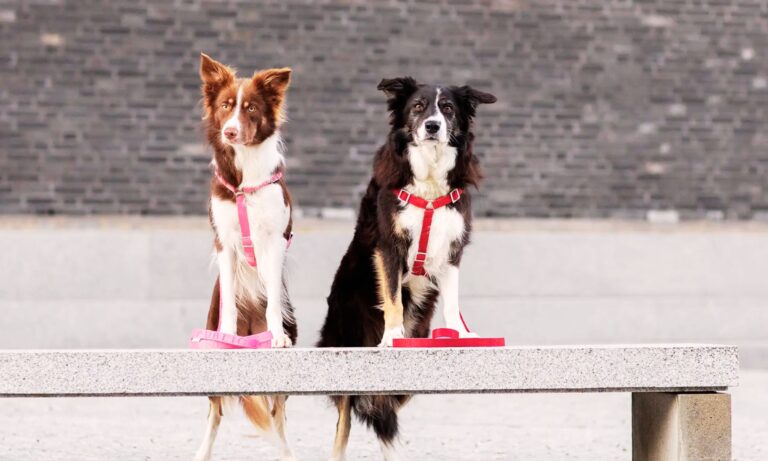| Summary: Vets recommend wet dog food brands that offer high-quality protein, balanced nutrients, and minimal fillers. Top choices include Hill’s Science Diet, Royal Canin, Purina Pro Plan, and Blue Buffalo. These brands support overall health, digestion, and specific dietary needs. Always consult your vet to choose the best option for your dog. |
When it comes to choosing the best wet dog food for your pet, many dog owners rely on veterinarian recommendations to ensure they are providing a nutritionally balanced, high-quality diet. Wet dog food is often recommended for its high moisture content, palatability, and easy digestibility, but not all brands or formulas are created equal. So, what wet dog food do vets recommend?
Veterinarians consider several factors when recommending wet dog food, including nutritional balance, ingredient quality, digestibility, and suitability for different health needs. I’ll explore the best vet-recommended wet dog foods, why they are chosen, and how to select the right one for your pet. To find out the what size collar for an Affenpinscher, ensure you measure your dog’s neck correctly for a perfect fit.
Blog Highlights
ToggleQuick Fix FAQ Table: What Wet Dog Food Do Vets Recommend?
| Question | Answer |
| What wet dog food do vets recommend? | Hill’s Science Diet, Royal Canin, Purina Pro Plan, Blue Buffalo. |
| Why do vets recommend these brands? | They contain high-quality ingredients, essential nutrients, and balanced formulas. |
| Is wet food better than dry food? | It depends on your dog’s needs. Wet food is hydrating and tasty, while dry food supports dental health. |
| Which wet dog food is best for sensitive stomachs? | Hill’s Science Diet Sensitive Stomach & Skin, Royal Canin Gastrointestinal. |
| What is the best wet dog food for senior dogs? | Purina Pro Plan Senior, Hill’s Science Diet Senior 7+. |
| Are grain-free wet foods vet-recommended? | Not always. Some grain-free diets have been linked to heart disease. Consult your vet first. |
| Can I mix wet and dry dog food? | Yes, mixing both provides variety and balanced nutrition. |
| How often should I feed wet food? | It depends on your dog’s size, age, and dietary needs. Follow feeding guidelines on the package or consult a vet. |
FAQs About Vet-Recommended Wet Dog Food
| Question | Answer |
| Can I mix wet and dry food? | Yes! Many vets recommend mixing wet and dry food for a balanced diet. |
| How much wet food should I feed my dog? | It depends on the dog’s weight, age, and activity level. Check the feeding guide on the can. |
| Is grain-free wet food better? | Not necessarily. Some dogs do better with grains unless they have allergies. |
| Is canned food better than homemade food? | Wet food is nutritionally balanced and safer than homemade food unless prepared under a vet’s guidance. |
| How do I transition my dog to wet food? | Gradually mix wet food with kibble over 7-10 days to avoid digestive upset. |
Why Do Vets Recommend Wet Dog Food?

Many vets prefer wet dog food over dry kibble in certain cases due to its numerous health benefits. Some of the reasons vets recommend wet dog food include:
1. Higher Moisture Content
- Dogs that don’t drink enough water naturally can benefit from wet food, as it contains 70-80% moisture, which helps with hydration and kidney function.
- Older dogs or those with kidney disease, urinary tract issues, or dehydration risks benefit from a high-moisture diet.
2. Improved Palatability
- Wet food has a stronger aroma and softer texture, making it more appealing for picky eaters.
- Dogs recovering from illness, surgery, or loss of appetite often eat better with wet food.
3. Easier to Chew and Digest

- Senior dogs with dental issues or missing teeth may struggle with kibble, making wet food a better option.
- Dogs with sensitive stomachs may find wet food easier to digest.
4. High-Quality Protein
- Many wet dog foods contain real meat as the first ingredient, making them protein-rich and ideal for muscle maintenance and energy levels.
- A high-protein diet supports active dogs, puppies, and dogs recovering from injuries.
5. Fewer Carbohydrates
- Some dry kibbles contain excessive fillers and carbohydrates, which are not ideal for all dogs.
- Wet dog food often has fewer grains and starches, making it better for dogs prone to obesity or diabetes.
However, vets also caution against solely feeding wet food, as it may lack dental benefits and be more expensive than dry food. That’s why some vets recommend mixing wet and dry food for a balanced diet.
For a step-by-step guide on how to wear collar to an Affenpinscher, check out this detailed article to ensure a comfortable and secure fit for your dog.
What Wet Dog Food Do Vets Recommend | Top Vet-Recommended Wet Dog Food Brands
Now that we understand the benefits of wet food, let’s explore the best wet dog food brands that veterinarians trust. These brands meet AAFCO (Association of American Feed Control Officials) standards and provide complete and balanced nutrition.
1. Hill’s Science Diet Wet Dog Food
Why Vets Recommend It:
- Developed by veterinarians and animal nutritionists
- Formulated for different life stages (puppies, adults, seniors)
- Supports skin, coat, digestion, and weight management
- Available in prescription formulas for specific health conditions
Popular Formulas:
- Hill’s Science Diet Adult Savory Stew (for general adult nutrition)
- Hill’s Prescription Diet k/d Kidney Care (for dogs with kidney disease)
- Hill’s i/d Digestive Care (for sensitive stomachs)
2. Royal Canin Veterinary Diet Wet Dog Food

Why Vets Recommend It:
- Vet-formulated prescription diets for dogs with specific health conditions
- Uses high-quality ingredients and is scientifically tested
- Great for dogs with food sensitivities, allergies, or digestion problems
Popular Formulas:
- Royal Canin Gastrointestinal Low Fat Loaf (for digestive health)
- Royal Canin Urinary SO Loaf (for urinary tract issues)
- Royal Canin Hydrolyzed Protein Wet Food (for dogs with food allergies)
3. Purina Pro Plan Veterinary Diets & Pro Plan Savor
Why Vets Recommend It:
- Provides specialized nutrition backed by scientific research
- Affordable yet high-quality wet food
- Available in both regular and prescription formulas
Popular Formulas:
- Purina Pro Plan Savor Classic Wet Food (for general nutrition)
- Purina Pro Plan EN Gastroenteric (for digestive health)
- Purina Pro Plan NF Kidney Function (for kidney disease)
4. Blue Buffalo Homestyle Recipe & Blue Natural Veterinary Diets
Why Vets Recommend It:
- Uses natural ingredients with real meat as the first ingredient
- No artificial preservatives, colors, or by-products
- Offers both general and prescription diets
Popular Formulas:
- Blue Buffalo Homestyle Recipe Chicken Dinner (general nutrition)
- Blue Natural Veterinary Diet HF Hydrolyzed Protein (for food sensitivities)
5. Wellness CORE Grain-Free Wet Dog Food
Why Vets Recommend It:
- High-protein, grain-free wet food ideal for active dogs
- Supports healthy weight and muscle development
- No artificial additives, making it ideal for dogs with food sensitivities
Popular Formulas:
- Wellness CORE Beef, Venison & Lamb Pâté
- Wellness CORE Turkey & Chicken Liver Recipe
How to Choose the Right Wet Dog Food for Your Pet
Every dog is unique, so the best wet food depends on age, breed, activity level, and health conditions. Here’s how to choose the best option:
1. Check the Ingredient List
- Real meat (chicken, beef, turkey, lamb) should be the first ingredient.
- Avoid artificial colors, preservatives, and by-products.
- Look for wholesome vegetables, fruits, and essential nutrients.
2. Consider Your Dog’s Life Stage

- Puppies: Need food rich in protein, DHA, and essential fatty acids.
- Adults: Require balanced nutrition for energy and overall health.
- Seniors: Benefit from joint support, low-fat content, and easy digestibility.
3. Factor in Health Conditions
- Sensitive stomachs: Choose easily digestible formulas like Hill’s i/d or Purina EN.
- Allergies: Hypoallergenic options like Royal Canin Hydrolyzed Protein are ideal.
- Weight control: Opt for low-calorie wet foods with lean protein.
4. Check for AAFCO Approval
Ensure the food meets AAFCO guidelines for complete and balanced nutrition.
How to Transition Your Dog to Vet-Recommended Wet Food
Switching your dog from kibble to wet food, or introducing a vet-recommended wet food for health reasons, requires a gradual transition to avoid digestive issues. Dogs have sensitive digestive systems, and sudden changes can lead to upset stomach, diarrhea, or refusal to eat. Here’s a step-by-step guide to help your dog adjust smoothly to wet food. Check out the best dog collars for Border Collie to find durable, stylish, and comfortable options for your active dog.
1. Understand Why Transitioning Slowly Is Important
A dog’s digestive system relies on gut bacteria to break down food. If you switch foods too quickly, the gut microbiome doesn’t have enough time to adapt, leading to issues like:
- Loose stool or diarrhea
- Vomiting or nausea
- Loss of appetite
- Gas and bloating
A slow transition helps your dog’s digestive system gradually adjust, reducing the risk of stomach upset.
2. Choose the Right Wet Food for Your Dog

Before transitioning, make sure the wet food is suitable for your dog’s:
- Age (puppy, adult, or senior formula)
- Health conditions (digestive issues, weight management, kidney disease, etc.)
- Dietary needs (grain-free, high-protein, low-fat, etc.)
If your vet has recommended a prescription diet, be sure to follow their instructions exactly.
3. Step-by-Step Transition Plan
The ideal transition period should last 7 to 10 days, but some dogs may need longer, up to 14 days.
Day 1-2: Start with a Small Amount of Wet Food
- Mix 75% of the old dry food with 25% of the new wet food.
- Observe how your dog reacts. If they eat well and show no digestive upset, continue.
Day 3-4: Increase the Wet Food Ratio
- Shift to 50% dry food and 50% wet food.
- Continue monitoring stool consistency and overall appetite.
Day 5-6: Reduce Dry Food Further
- Move to 75% wet food and 25% dry food.
- If your dog is adjusting well, proceed to the final step.
Day 7-10: Fully Switch to Wet Food
- Serve 100% wet food at meal times.
- If your dog shows any signs of discomfort, slow the process down by keeping a mixed ratio longer.
4. Troubleshooting Common Problems
Some dogs adjust quickly, while others may struggle. Here’s how to address common issues:
| Issue | Solution |
| Refusing to eat the wet food | Try a different texture (pâté vs. stew), warm it slightly, or mix with broth. |
| Loose stool or diarrhea | Slow the transition process, ensuring no abrupt changes. |
| Vomiting | Stop feeding for a few hours, then restart with a smaller portion. If it continues, contact your vet. |
| Picky eater tendencies | Mix a small amount of kibble back in and gradually phase it out. |
5. Ensuring Proper Nutrition After Transition
Once your dog is fully switched to wet food, ensure they’re getting the right portions and nutrients:
- Follow feeding guidelines on the can based on your dog’s weight.
- Monitor stool consistency to detect any digestion issues.
- Provide fresh water since wet food alone may not be enough for hydration.
- Schedule regular vet checkups to ensure your dog is thriving on the new diet.
A successful transition to vet-recommended wet food leads to better digestion, hydration, and overall health for your dog. Be patient, observe your dog’s response, and make adjustments as needed for a smooth dietary shift. For guidance on choosing the right collar size for an Airedale puppy, check out this detailed guide.
Final Thoughts: Which Wet Dog Food Do Vets Recommend?
Veterinarians prioritize high-quality, nutritionally complete wet dog food that suits a dog’s individual needs. Brands like Hill’s Science Diet, Royal Canin, Purina Pro Plan, Blue Buffalo, and Wellness CORE are commonly recommended for their scientifically formulated and vet-approved recipes. Hope so, now you know what wet dog food do vets recommend.
Choosing the right wet dog food means considering your dog’s health, preferences, and specific dietary needs. Always consult with your vet before making major dietary changes to ensure your furry friend gets the best possible nutrition. For insights on whether Airedales are good off-leash, explore this comprehensive article.





